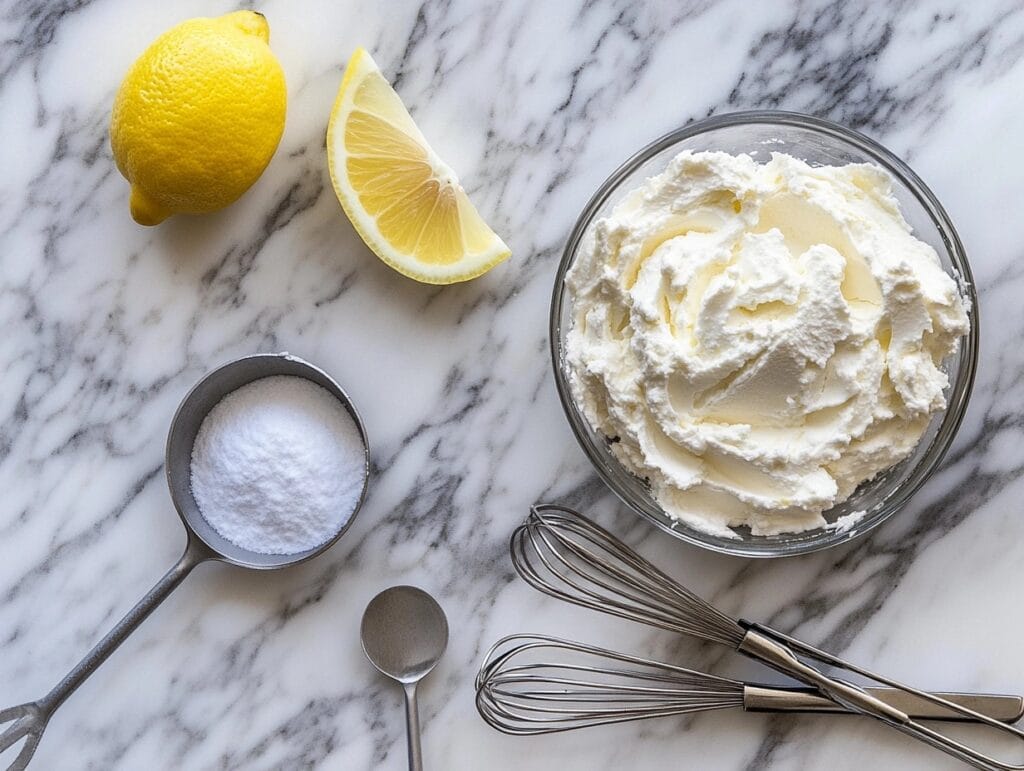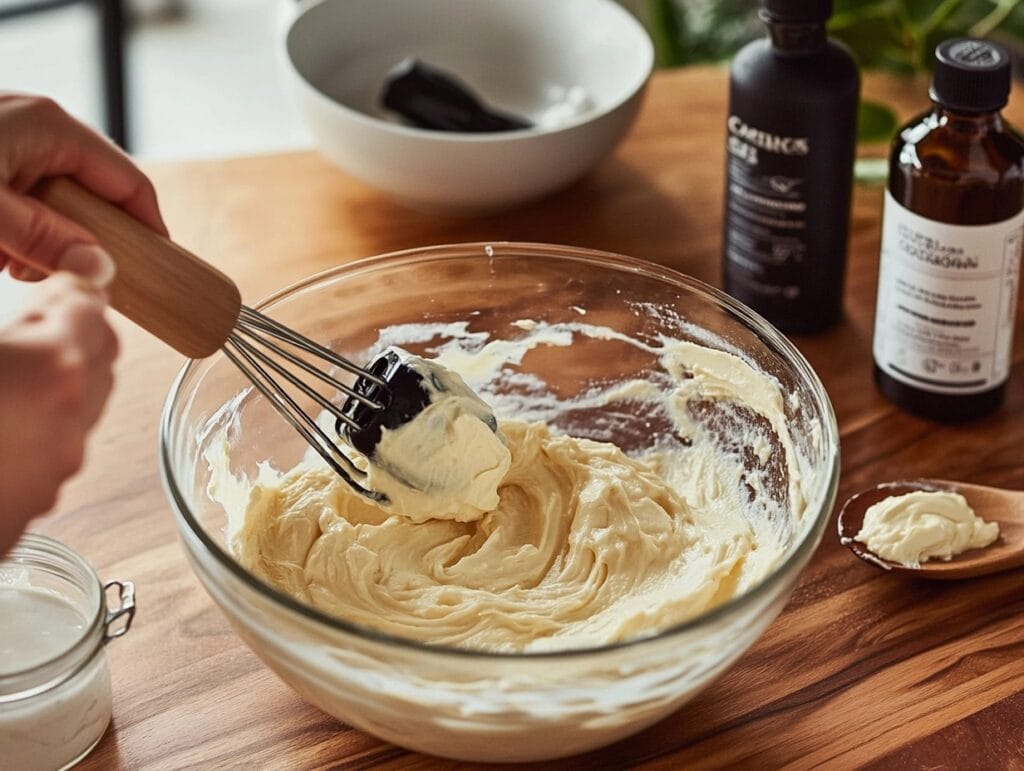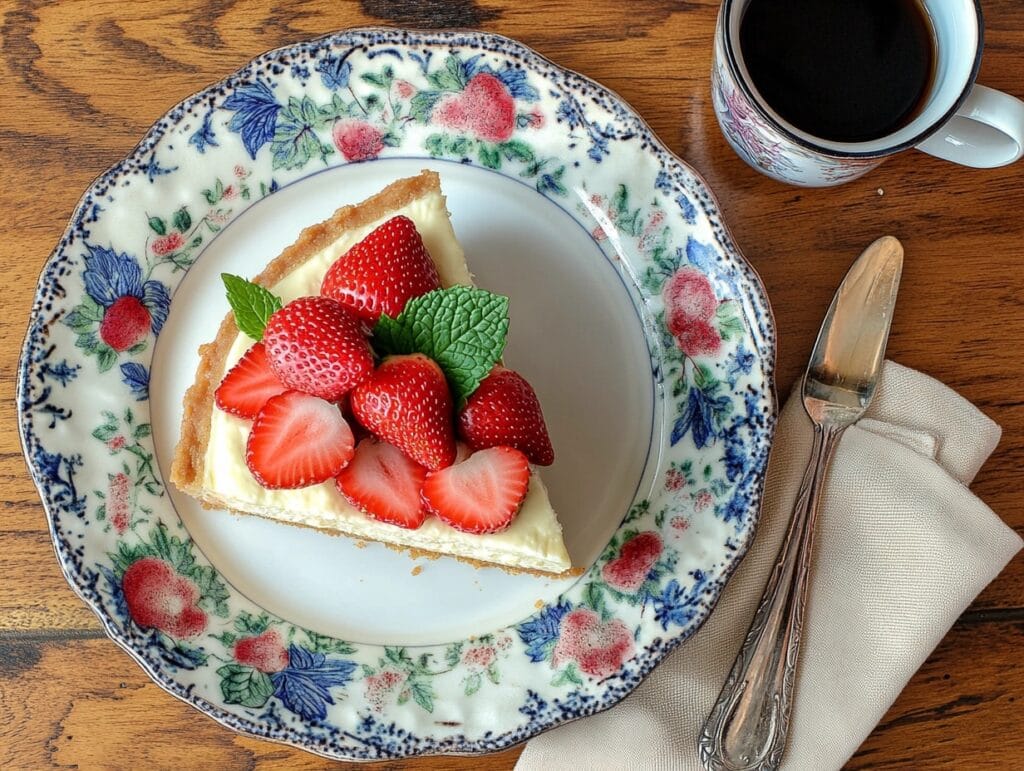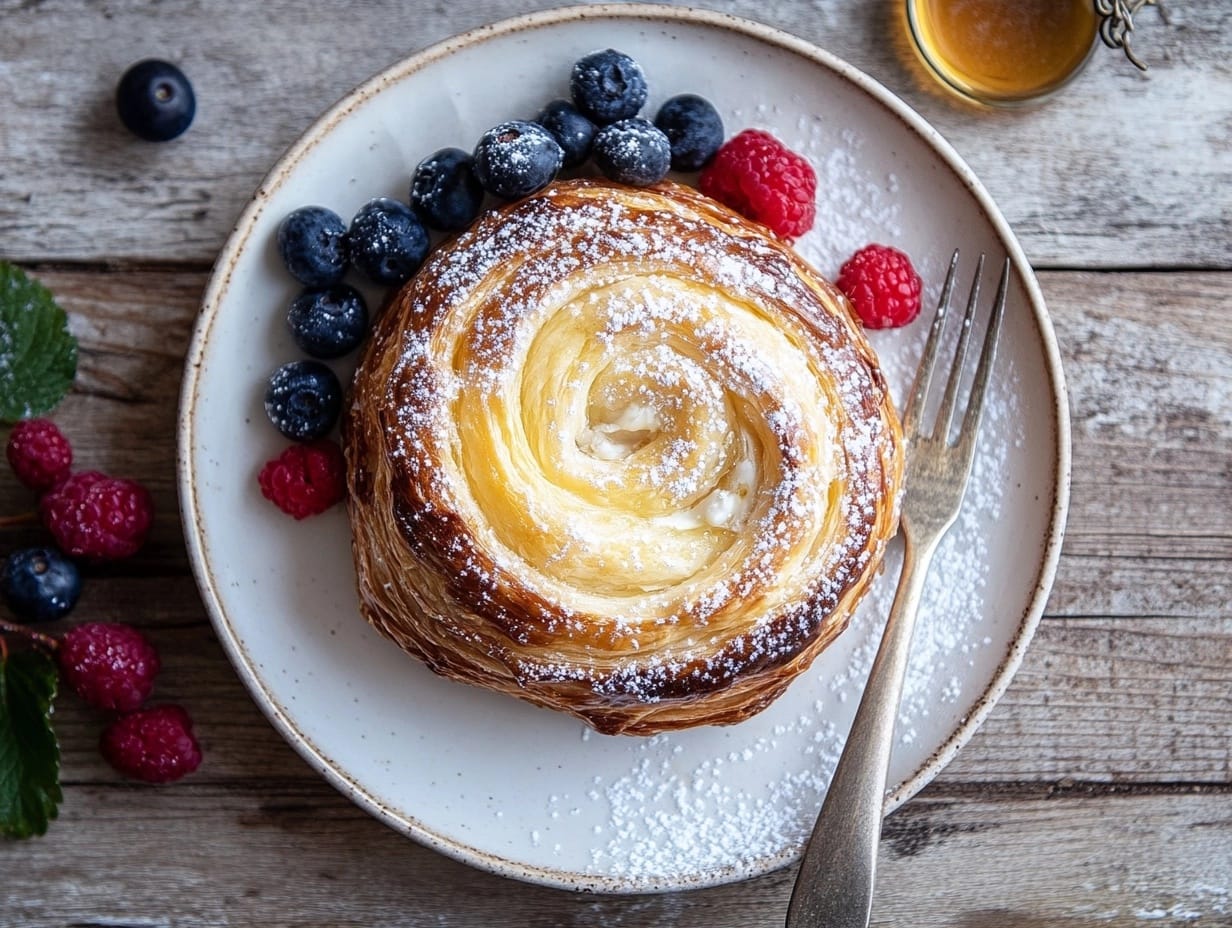Who doesn’t love a dessert that feels fancy but is super simple to make? If you’ve been searching for a way to add a creamy, irresistible twist to your baking, cream cheese filling is the answer. It’s quick to prepare, tastes amazing, and pairs beautifully with everything from cakes to pastries. The best part? You don’t need to be a pro baker to nail it. With just a handful of ingredients, you can whip up something that looks and tastes like it came straight out of a bakery.
This filling isn’t just delicious; it’s incredibly versatile too. Whether you’re making a rich cheesecake, fluffy cinnamon rolls, or a simple fruit tart, it’s the secret ingredient that takes your bakes to the next level. Plus, it’s a fun little challenge to see how creative you can get with it!
Ready to add a touch of creamy perfection to your next baking adventure? Keep reading for a step-by-step guide that’ll have you impressing friends and family in no time!

Cream Cheese Filling Recipes: Sweet and Savory Delights for Every Occasion
- Total Time: 10 minutes
- Yield: 1 1/2 cups 1x
Description
Whether sweet or savory, this smooth and versatile cream cheese filling elevates any dessert or snack. From cheesecakes to bagels, it’s your secret weapon for next-level flavor with minimal effort.
Ingredients
- 8 oz (225g) full-fat cream cheese, softened
- 1 cup powdered sugar
- 1 tsp vanilla extract
- 1 tsp lemon juice (optional)
- Pinch of salt
- Optional: 1/4 tsp cinnamon or nutmeg
- Optional: 1–2 tbsp heavy cream for creamier texture
Instructions
- Place softened cream cheese in a mixing bowl.
- Use a hand or stand mixer to beat cream cheese until smooth.
- Gradually add powdered sugar, mixing after each addition.
- Mix in vanilla extract, lemon juice, and a pinch of salt.
- Add any optional spices or cream and mix until fluffy and well combined.
- Adjust texture by chilling or adding cream as needed.
- Use immediately or refrigerate for up to 5 days in an airtight container.
Notes
Perfect as a filling for pastries, topping for pancakes, or savory spread with herbs. For caramelization, add granulated sugar before baking and bake at 375°F until golden.
- Prep Time: 10 minutes
- Cook Time: 0 minutes
- Category: Dessert, Spread
- Method: No Bake
- Cuisine: American
Nutrition
- Serving Size: 2 tablespoons
- Calories: 110
- Sugar: 9g
- Sodium: 60mg
- Fat: 7g
- Saturated Fat: 4g
- Unsaturated Fat: 2g
- Trans Fat: 0g
- Carbohydrates: 10g
- Fiber: 0g
- Protein: 1g
- Cholesterol: 20mg
Keywords: cream cheese filling, sweet spread, no bake dessert, versatile, cheesecake, pastries
Table of Contents

Key Ingredients for a Perfect Cream Cheese Filling
Selecting Fresh Cream Cheese
The heart of any cream cheese filling recipe is, of course, the cream cheese itself. Picking the right one can make or break your dish! Always choose a high-quality, full-fat cream cheese for the best flavor and texture. Brands with minimal additives work best, ensuring a smooth and creamy consistency. If you’re watching your calories, you can opt for low-fat versions, but keep in mind that the filling might be slightly less rich. Make sure the cream cheese is at room temperature before using it—this little trick helps it blend more evenly and avoids lumps.
Essential Seasonings and Flavor Enhancers
What makes cream cheese filling truly special is the combination of flavors that elevate its natural creaminess. Vanilla extract is a must for that classic touch of sweetness, while powdered sugar provides just the right amount of sweetness without making the filling grainy. Want a slight tang? Add a teaspoon of fresh lemon juice—it balances the richness beautifully. Some people like to experiment with a pinch of cinnamon or nutmeg, especially for autumnal treats. Don’t forget a tiny pinch of salt to bring out the flavors even more!Looking for other ideas? This crab brûlée recipe highlights a similarly innovative use of creamy ingredients.

Step-by-Step Instructions for Cream Cheese Filling
Preparing the Cream Cheese Filling
Before diving in, gather all your ingredients—cream cheese, powdered sugar, vanilla extract, and any optional additions like lemon juice or cinnamon. Start by placing the cream cheese in a large mixing bowl. Make sure it’s softened; otherwise, you’ll end up with a lumpy mixture.
After softening the cream cheese and gathering your ingredients, it’s time to prep your tools. Use a sturdy mixing bowl and a hand or stand mixer for the smoothest results. If you’re doing it manually with a whisk, prepare for an arm workout! Start by gently beating the cream cheese to remove any lumps. If you notice stubborn clumps, don’t worry—these will smooth out as you mix in the sugar and flavorings.
Making the Cream Cheese Filling
Using a hand mixer or a stand mixer, beat the cream cheese until it’s silky smooth. Next, gradually add the powdered sugar. Add it in small portions to prevent a sugar cloud from taking over your kitchen! Once the sugar is fully incorporated, pour in the vanilla extract and any other flavorings you’ve chosen. Continue mixing until everything is evenly combined and fluffy. At this point, your filling should hold its shape but still be easy to spread. If it’s too thick, add a splash of heavy cream; if it’s too runny, pop it in the fridge for 10–15 minutes to firm up.
Once the cream cheese is softened and smooth, it’s time to gradually add the powdered sugar. Add the sugar in small increments, about a quarter cup at a time. This helps you control the sweetness and prevents the mixture from becoming too gritty. Blend until the sugar is fully incorporated, then add your vanilla extract or other flavorings. Want a softer texture? A splash of whipping cream can make your filling extra silky. Need a firmer consistency? Chill the mixture for 10–15 minutes before using it in your dessert.
Mastering the Caramelization Process for Cream Cheese Filling
Selecting Fresh Cream Cheese
Caramelization might sound tricky, but starting with the right cream cheese sets you up for success. For recipes requiring baked fillings, like danishes or tarts, cream cheese that’s slightly firm works best—it holds up under heat while blending well with sugar.
If you’re aiming for a caramelized finish, opt for a cream cheese that’s rich and not overly processed. Fresh, high-quality cream cheese ensures even browning during baking, which gives your filling that glossy, golden appearance. Keep in mind that adding granulated sugar to the filling enhances caramelization.
Tips for Perfect Caramelization
To get that golden-brown finish, mix a touch of granulated sugar into your filling before baking. The sugar will caramelize as it bakes, adding a slightly crispy, sweet layer to your dessert. Keep a close eye on your oven temperature—375°F is ideal for most pastries. If the edges start to brown too quickly, cover them with foil. And remember, patience is key! Let the filling cool slightly before serving to allow the caramelized sugars to set properly.
Caramelization is all about timing and temperature. Bake your dessert at 375°F, ensuring that the filling is spread evenly to prevent uneven browning. For smaller pastries like danishes, keep the baking time shorter—about 15 minutes. For larger items like cheesecakes, baking at a slightly lower temperature for longer helps develop the perfect caramelized top without burning. Adding a sprinkle of coarse sugar or a drizzle of honey before baking can give your filling an extra layer of texture and sweetness.

How to Serve and Present Cream Cheese Filling
Garnishing and Plating Tips
Presentation is half the battle when it comes to desserts. Sprinkle a dusting of powdered sugar over your filled pastries for a bakery-style touch. Fresh fruit, like strawberries or blueberries, can add both color and flavor. A drizzle of chocolate or caramel sauce works wonders for an extra layer of indulgence.
The secret to a stunning presentation lies in the details. For a simple and elegant garnish, use a fine mesh sieve to sprinkle powdered sugar over your dessert. If you’re feeling fancy, create decorative swirls with a piping bag or top with edible flowers for a professional touch. Chocolate curls, crushed nuts, or even a sprinkle of colorful sprinkles can add a fun and personal twist.For a savory twist, try using cream cheese filling as a spread on crackers or bagels, similar to the tangy richness found in this creamy enchilada recipe.
Pairing Cream Cheese Filling with Other Things
Cream cheese filling isn’t just for cakes and pastries. It pairs wonderfully with fluffy pancakes, waffles, or even as a dip for fresh fruits like apple slices. For a savory twist, skip the sugar and mix in herbs like dill or chives—it’s an excellent spread for bagels or crackers.
Cream cheese filling is a jack-of-all-trades when it comes to pairing. Try using it as a topping for French toast or a filling for crepes. It also works beautifully with fresh fruit salads or sandwiched between soft cookies for a unique dessert. For savory options, skip the sugar and mix in roasted garlic or sun-dried tomatoes for a spread that pairs perfectly with crackers or toasted bread.
Creative Variations of the Cream Cheese Filling Recipe
Spicing Up the Classic Cream Cheese Filling
Want to add a fun twist to the classic recipe? Try mixing in a teaspoon of pumpkin spice for a fall-inspired treat or a dash of espresso powder for a mocha-infused filling.
Adding spices like cinnamon, cardamom, or even chili powder can give your cream cheese filling a unique flair. These spices work especially well in desserts with warm, rich flavors, like pumpkin pie or chocolate tarts.
Adding Unique Ingredients to Enhance Flavor
Get adventurous with add-ins like crushed cookies, fruit preserves, or even a swirl of Nutella. Each addition transforms the basic cream cheese filling into something completely new and exciting.
Want to wow your guests? Fold in chopped fresh fruit, like strawberries or raspberries, for a burst of natural sweetness. You can also experiment with liqueurs like Baileys or Amaretto for a sophisticated twist. Crushed cookies, like Oreos or graham crackers, add texture and turn your filling into a crowd-pleasing masterpiece.
Final Thoughts
Cream cheese filling is an incredibly versatile ingredient that can take your desserts to new heights. Whether you stick with the classic recipe or get creative with unique flavors and presentations, this filling is sure to impress. Why not grab your mixing bowl and give it a try today?
FAQs
What is in Philadelphia cream cheese filling?
Philadelphia cream cheese filling typically includes cream cheese, powdered sugar, and vanilla extract. Some recipes may also add whipping cream or a touch of lemon juice for extra creaminess and flavor. It’s a simple mix that’s perfect for desserts and pastries.
How to firm up cream cheese filling?
If your cream cheese filling is too soft, you can firm it up by chilling it in the refrigerator for 15–30 minutes. Adding a bit more powdered sugar or reducing any liquid ingredients, like cream, can also help thicken the consistency.
Do cakes with cream cheese filling need to be refrigerated?
Yes, cakes with cream cheese filling should be refrigerated. Cream cheese is perishable and can spoil if left at room temperature for too long. Store the cake in an airtight container in the fridge for freshness.
What can I put cream cheese spread on besides bagels?
Cream cheese spread is incredibly versatile! Use it on toast, crackers, or as a dip for fresh fruits and veggies. It’s also great as a spread for sandwiches or a filling for wraps and crepes.
Can you eat Philadelphia no bake cheesecake filling?
Yes, you can eat Philadelphia no bake cheesecake filling straight from the tub! It’s pre-made, ready to eat, and has a creamy, slightly sweet taste that’s perfect for desserts or as a quick snack.
What’s the difference between cream cheese and Philadelphia cream cheese?
Cream cheese is a general term for soft, fresh cheese made from milk and cream, while Philadelphia cream cheese is a specific brand known for its smooth texture and rich flavor. Both can be used interchangeably in recipes, but some people prefer Philadelphia for its consistency and taste
Conclusion
Cream cheese filling is, without a doubt, a true kitchen hero. Not only is it easy to make, but it’s also incredibly versatile and always a crowd-pleaser. Whether you’re crafting sweet treats like cakes or pastries, or exploring savory dishes like stuffed breads, this filling consistently adds a touch of magic. Best of all, you don’t need to be a professional baker to get it just right.
First, remember that quality ingredients truly make all the difference. Additionally, take the time to soften your cream cheese properly—it’s a small step that makes mixing so much easier. Next, have fun experimenting with flavors and textures. For instance, you can add spices, fresh fruit, or even a splash of vanilla to customize it. After that, don’t forget to get creative with presentation. A simple sprinkle of powdered sugar or a few fresh berries can quickly turn a humble dessert into a masterpiece.
Finally, it’s your turn to give it a go! Gather your ingredients, follow the steps, and impress your family and friends. With each delicious creation, you’ll have everyone coming back for more. Ready to start? You’re going to absolutely love this!

